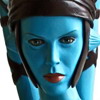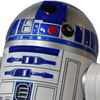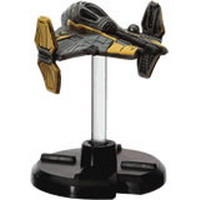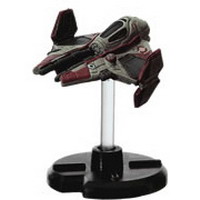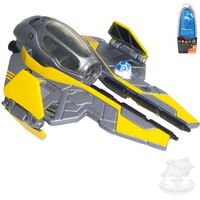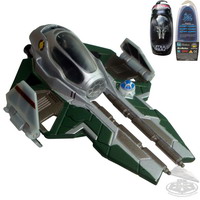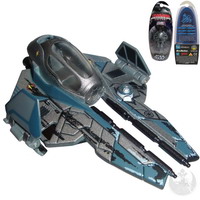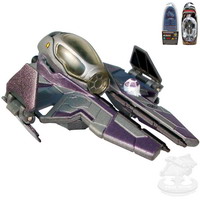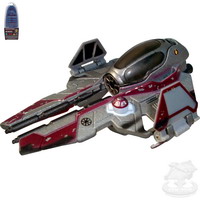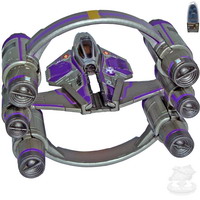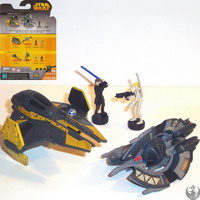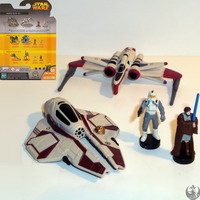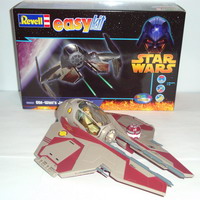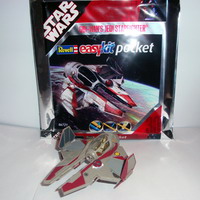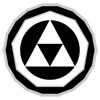|
The Eta-2 Actis-class interceptor, also known as the Jedi interceptor or Jedi starfighter due to its extensive use by Jedi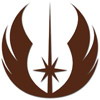 | Jedi OrderOrganizationGalaxy-Wide Organizations |
pilots, was a Republic starfighter used late in the Clone Wars that shared design elements with the Republic's Delta-7 | Delta-7A InterceptorStarshipStarfighter Models |
and Delta-7B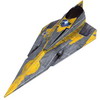 | Delta-7B InterceptorStarshipStarfighter Models |
starfighters, as well as the TIE fighters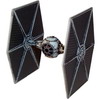 | TIE FighterStarshipStarfighter Models |
of the later Galactic Empire. The Galactic Alliance would later come to utilize a successor, the Eta-5 interceptor.At 5.47 meters in length, the Eta-2 was significantly shorter than the already diminutive Delta-7. The new fighter's mass was further reduced by removing much of the forward space-frame, leaving the front of the ship in a forked shape. Like its predecessor, it was also too small to hold an onboard hyperdrive. Because of this, the Eta-2 had to rely on carrier vessels or Syliure-45 hyperdrive modules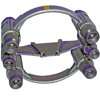 | Syliure-45 Long-Range Hyperdrive ModuleStarshipUtility Ships & Devices |
for long-distance travel. However, the Actis did have a full astromech droid socket, instead of a truncated unit as was seen in the early models of Aethersprite starfighters.Like the simultaneously developed ARC-170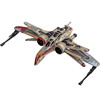 | ARC-170 StarfighterStarshipStarfighter Models |
and Alpha-3 Nimbus-class V-wing starfighters | Alpha-3 Nimbus-class V-Wing StarfighterStarshipStarfighter Models |
, the Eta-2 incorporated S-foils to radiate excess engine heat in the thick of combat, reducing the likelihood of damage to the craft. Occasionally, though not always, the lifting panels were opened during normal flight to further reduce stress on the engines. Such a design element carried with it certain flaws, however; this area of the hull was lightly armored, and extremely vulnerable to laser fire and buzz droid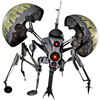 | Buzz DroidDroid |
sabotage. This design element would be carried on through the radiator panels of later TIE fighters which, unlike the Eta-2's foils, were locked in static positions but essentially served the same purpose.Thanks mostly to the fact that its development occurred in the midst of a galactic civil war, the Eta-2 had more firepower at its disposal than the Delta-7 and Delta-7B - two large laser cannons and two ion cannons. While the size of its guns provided it with respectable firepower, the fighter's limited power systems restricted its ability to fire continuously. Raith Sienar's twin ion engine design allowed the Eta-2 to achieve a maximum acceleration of 5,200 g. Unlike the Delta-7 and Delta-7B, the standard Eta-2 was not equipped with shields, as Sienar reasoned that agility and speed were its best defense. However, a later variant did include shields, as well as slightly heavier armor and a stronger hull.Read more... |
See also |


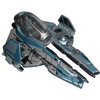
.jpg)


